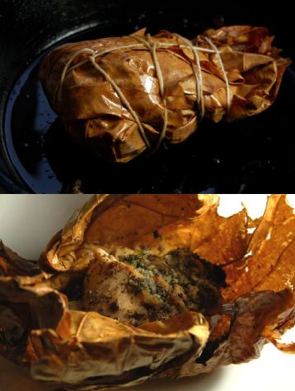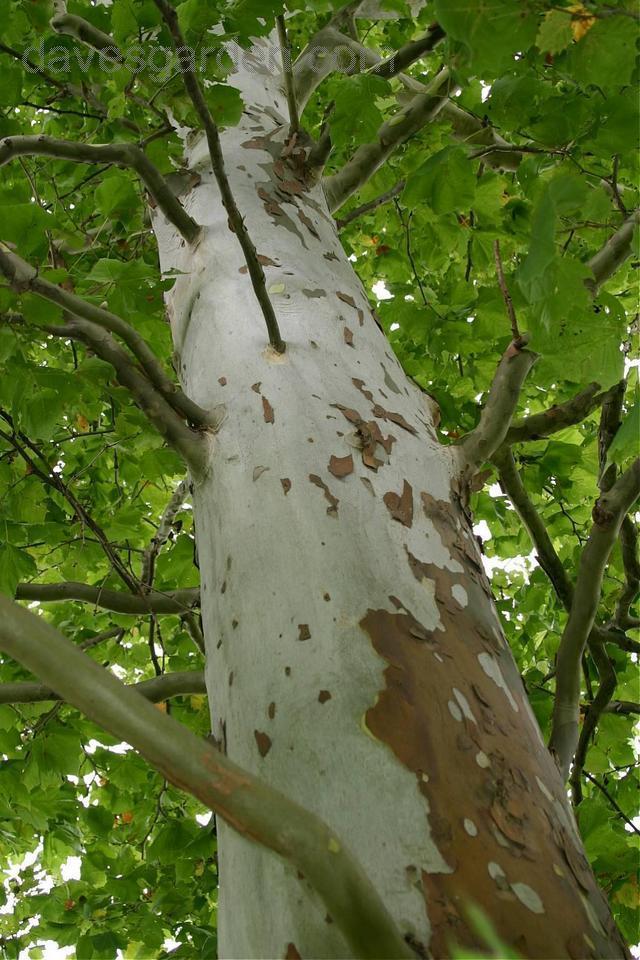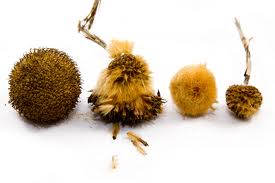Sycamores: Not Just Another Plane Tree
Sycamore trees are not high on the edible list, unless you’re in need.
Actually, sycamores, Platanus occidentalis (PLAT-uh-nus ock-sih-den-TAY-liss) get a bad rap. Though they grow big and showy, landscapers don’t use them because they can have a lot of tree diseases. Homeowners don’t like them because they shed piles of maple-like leaves and disrupt underground lines. Woodworkers don’t care for the wood because it tends to hold water and twist when it dries. But that is one reason why we like it.
The sycamore is full of drinkable sap, read water when you need it. The sycamore can also provide a maple-like syrup as well, but you’ve have to boil many gallons of it to get syrup or sugar. Knowing there is always a source of drinkable sap/water nearby has its advantages.
To the forager, or the bushcrafter, another advantage of the sycamore is its light-colored wood can be used to make safe utensils such as wooden spoons, forks or skewers. Historically it was made into boxes to hold food as well as fruit and vegetable baskets. Other early uses included barber poles, wooden washing machines, lard pails, Saratoga trunks, piano and organ cases, phonograph boxes, and broad paneling in Pullman train cars. It has been used for butcher blocks for many years because it is hard to split, as well as flooring, handles, and pallets. Incidentally, there is a second sycamore of interest but it only grows in California and Mexico, Platanus racemosa. Chunks of its bark can be use for a coffee substitute.
And while it may never come to this, sycamores can grow so large they have hollow trunks and many a settler sought long-term shelter inside a sycamore. It was not uncommon to house a pig to a horse inside a living sycamore. At one time two brothers lived for three years inside the hollow trunk of an American Sycamore. One can believe that given the size of the champion sycamore tree in the United States. It’s in Jeromesville, Ohio, and is nearly 50 feet around at the base (582 inches at 4 1/2 feet high.) It is 129 feet tall and has a crown spread of 105 feet.

Mia Wasilevich using the fragrant sycamore leaves as a wrap to keep lambsquarter seed stuffed rabbit leg moist.
And just as the tree is human friendly it is kind to animals as well. Sycamore seeds are eaten by some birds including the purple finch, goldfinch, chickadees, and dark-eyed junco. The seeds are also eaten by muskrats, beavers, and squirrels. Hollow sycamores can provide dens for black bear. Cavity nesting birds that call the sycamore home include the barred owl, eastern screech-owl, great crested flycatcher, chimney swift, and the wood duck. In fact one bird uses the tree rather cleverly.
If you look at a sycamore of any size you will often see a line of little holes in the bark, made by the Sapsucker. And while the Sapsucker likes sweet sap it has an ulterior motive. After the bird flies away insects come to feed on the sugary sap. The bird then returns and eats he bugs. Clever bird. Hummingbirds also eat the seeping sap.
The naming of the sycamore is a rather complex affair. Sycamore is from two Greek words siga and mora which mean “Fig and mulberry.” First there was a fig tree in the Middle East called Ficus sycomorus, the Sycomore Fig of Bible fame. The American sycamore’s leafs and round seeds were reminiscent of the Sycomore Fig, thus it was called Sycamore. It’s botanical name is a combination of Greek and Dead Latin. Planatos (plane) was a Greek name for the tree, and occidentalis means “of the west” to separate it from similar European trees. Greeks also call the tree Daphne, a strange little word. Depending upon the accent in Greek it can be the tree and an area of Athens that once had an insane asylum, and where we get the word “daffy” in English. Racemosa means cluster and refers to the seed cluster of the California sycamore.
Also, according to Herodotus, the Greeks owed some of their success to the charm of the plane tree. In 480 BC, invading Persian King Xerxes camped his army in a grove of those trees. The king was so enamored by them that he put off his march for a few days. This delay helped lose Xerxes the war, and Greece went on to build the Athenian Empire.
The American sycamore is sometimes confused with the several other trees in the same family that are similar in appearance. If the tree has single seed pod, it is the sycamore. If there are two seed pods together, it’s a London planetree. If there are 3-5 seed pods, it is an Oriental planetree which has the seed pods hanging like beads. Those seed pods when dry have a coating of tiny hairs and can irritate air passages, so handle them carefully. However, that same hair makes excellent tinder.
Green Deane’s “Itemized” Plant Profile
IDENTIFICATION: Tall tree resembling a maple with mottled bark, leaves palmate, large, eight inches wide and long or more, with three lobes, glossy green on top, paler underneath. Non-edible fruit, a brown cluster.
TIME OF YEAR: Sap availability depends on location, year round in warm areas.
ENVIRONMENT: Grows best on sandy loams or loam with a good supply of ground water, typically on the edges of lakes and streams. Found in eastern North America, except the California Sycamore.
METHOD OF PREPARATION: For the American sycamore, the occidentalis, sap, tap like a maple. For the California Sycamore, the Racemosa, put chips of the bark and root in hot water.
HERB BLURB
Native Americans used Platanus occidentalis for a variety of medicinal purposes, including cold and cough remedies, as well as dietary, dermatological, gynecological, respiratory, and gastrointestinal aids



